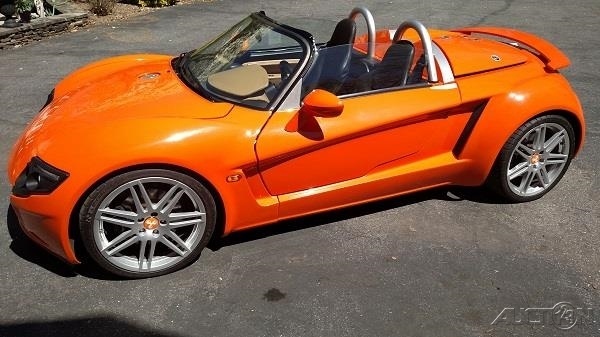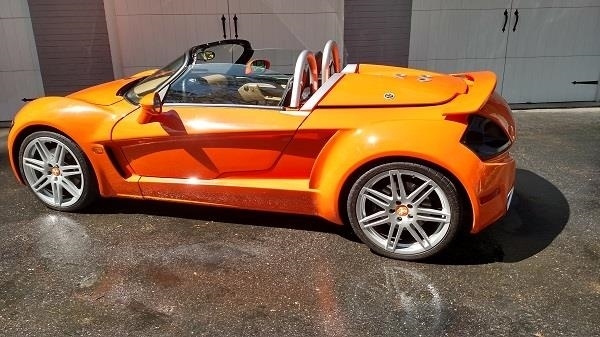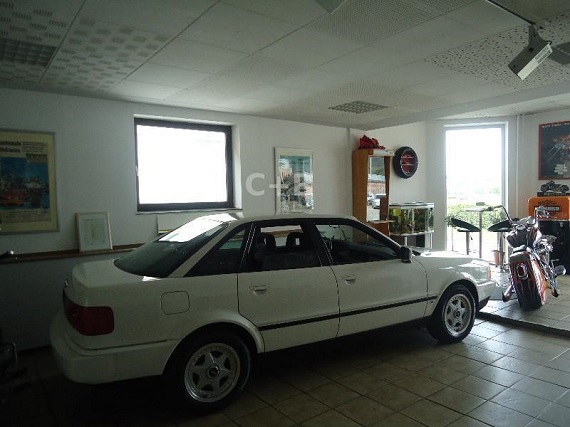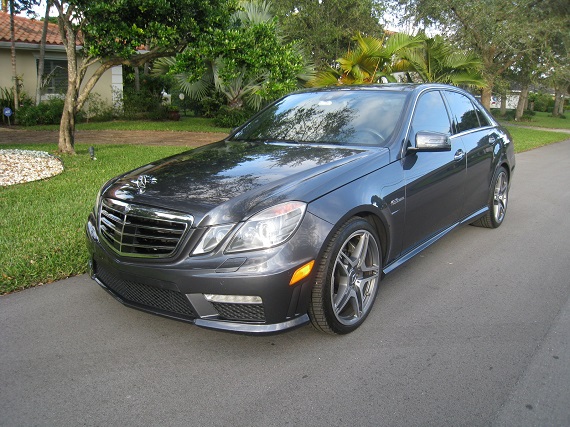Many enthusiasts – this author and, in general, all of the writers at GCFSB included – complain that cars have gotten too complex, too heavy, too isolating. An increasing reliance on computer controls to save poor driving skills and reign in huge horsepower certainly produces impressive numbers on the track. But, somehow the charts of ‘Ring lap times, superbike-embarassing 0-60 times and dyno numbers has taken an important aspect out of driving – the driver. However, at the same time that there has been an explosion of horsepower numbers and proliferation of computer controls, there has been a backlash of simple, enjoyable cars to drive. Models like the Elise proved you didn’t need a 10 cam, quad turbocharged V20 to go fast. Utilizing a relatively cheap and reliable inline-4 and adding lightness, the Elise takes the electronics out and relies on you paying attention to everything that is going on in the car to go fast – yet, fast it goes. Similar cars like the Ariel Atom, Opel Speedster/VX220, BAC Mono and, yes, even the Mazda Miata have followed the same recipe. But we’ve got one today I’m betting you probably have never heard of in the YES! Roadster Turbo. As the engineers from Lotus did, the team of Funke and Will from YES! took some proven parts from the Volkswagen and Audi catalogue and dropped them into the middle of an aluminum frame, added some spice and styling that channeled the Audi TT, Opel Speedster, Lotus Elise, the Spyker C8 and a little Lamborghini inspiration and produced one cool little package:
Category: Exclusive
From yesterday’s end of the run B2 Audi 90, today we have another special feature on a unique Audi. While the B3 heavily revised the safety, aerodynamics, comfort and luxury for the small Audi range, weight went up and power was effectively the same, meaning that the B3 was at a distinct performance disadvantage to the natural rival BMW. Audi did increase the amount of power that the B3 quattros had at their disposal with the introduction of the 7A 20V motor in 1990, but the twin-cam inline-5 wasn’t available in front drive Audis which sold in greater number. That gulf grew wider as BMW upped the power again with the new E36 chassis, now with the best part of 190 horsepower available in the 325i. To answer the competition, Audi heavily revised both its large and small chassis in for the 1991 and 1992 model years. The C4 model was introduced late in 1990 in Europe, and while Audi did away with the 200 model the new S4 ostensibly replaced it with even more sport. But the 100 saw massive changes too, with the introduction of automatic transmissions to the quattro range widening the appeal of the model. Though the V8 quattro had offered that option previously, it was a much more expensive model and the 100 was also available in Avant form. But the big change was under the hood, where a AAH 12 valve single cam 2.8 liter V6 replaced the previous NG/NF 2.3 naturally aspirated inline-5 and MC1/2 2.2 turbocharged inline-5 power units of the 100 quattro and front-drive and 200 Turbo front wheel drive models, respectively.
In the small chassis, Audi continued to offer two different chassis levels for the newly introduced for 1992 B4. Carrying over from the C4 range was the same 172 horsepower 2.8 V6, powering either all four wheels or the front wheels only. Few mechanical changes were made to the quattro models versus earlier inline-5 models, but the front drivers received more refinement from a trailing arm torsion beam axle instead of the previous Panhard rod design. Outside, new front and rear fascia was mostly expressed by integrating the hood and grill to match the C4 design. Fender flares increased, new contoured hoods offered more character, and different bumper covers updated the look slightly. New wheel designs were also incorporated into the B4 lineup, with 10 spoke Speedline-made wheels being standard and optional Ronal “Sport” 5-spoke wheels, both in a slightly greater 37mm offset as opposed to the 45mm offset of early B3 models (with the exception of the Coupe). There were plenty of other minor changes inside and out that added up to a very different and more refined feel versus the earlier B3. But Audi needed to provide some time for U.S. dealers to relaunch the new 90 model range. So, while in 1991 you could buy either a 90 quattro 20V or 80 quattro, in 1992 there was only a 80 model available – no 90s were sold. This coincided with the lowest sales figures for the small chassis Audi had recorded. The new 90 would launch here in late 1992 as a 1993 model in both quattro and FrontTrak form. And to help promote the new model, Audi brought over a few pre-production models, one of which we have here:
Email Seller: 1992 Audi 90S on German Cars For Sale Blog
4 CommentsFamiliar to U.S. fans as the Audi 4000, in the rest of the world Audi continued a naming tradition that dated back to the 1960s regarding engine output. Most of the models didn’t make it here, but prior to the 1980s there were Audi 50s, 60s, 80s and 100s. The original B1 80 was also called the Fox here, not to be confused with the later Volkswagen Fox model. When Audi switched to the B2 chassis, the U.S. nomenclature changed to the 4000 most remember. And there were several engine configurations available initially, including a diesel, turbo diesel, inline-4 and inline-5 motor in both 2 and 4 door configuration, along with the stablemate Coupe GT model though the designations no longer aligned with engine power. By the time Audi progressed to 1984 and the introduction of the 80/4000 quattro, though, engine choices dwindled. In the Coupe GT, you could only get the 5-cylinder motor – effectively the same motor that was available in the quattro but with a slightly different exhaust manifold that netted 5 more horsepower in the sedan. Otherwise, if you bought a 4000 front drive model, you got a 1.8 inline-4 that was shared with the Volkswagen model range. This continued with the refreshed models in 1985, with the only further engine change being the later 1987.5 Coupe GTs switching to the NG 2.3 130 horsepower motor.
However, in Europe there were still many configurations you could get the B2 in. There were two model levels; 80 and 90, with the later being the more upscale version with more powerful motors. This would be seen in the U.S. later with the B3 run, but in Europe there were pretty substantial differences visually and mechanically between the 80 and 90. The 90 was, for all intents and purposes, a Coupe GT under the skin. In 4-door guise, it retained the larger 10.1″ vented front brakes mated to 4×108 wheels instead of 4×100. Outside the aerodynamic bumper covers only made their way onto 90 models, while 80s carried bumper covers that looked very similar to the pre-85 models. The engine was the same 2.2 inline-5 that would be found in the quattro models, with European variants producing a few more horsepower than U.S. markets. As with the Coupe GT, these were expensive models that were more heavily taxed than the smaller motored 80s, and consequently they’re not seen as often. But a seller contacted us with a pretty stunning example that’s worth taking a look at.
Email Seller: 1985 Audi 90 on German Cars For Sale Blog
3 Comments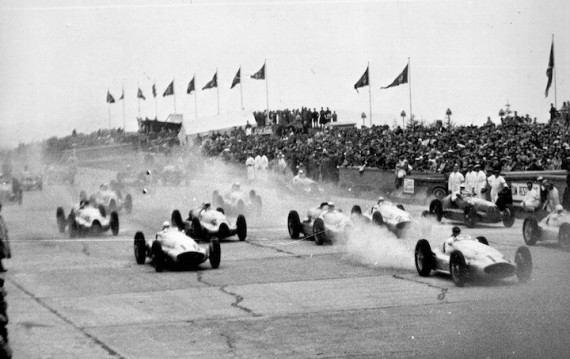
Start of the 1939 German Grand Prix with Auto Union Type D and Mercedes-Benz W154 M163s – their last meeting in the nation of their birth
Yesterday saw an interesting comparison in racing; in F1, Mercedes-Benz once again dominated the field with seeming ease, dictating the pace and watching the strategy of its competitors from Maranello. While truth told my focus remained squarely on the Formula 1 race, there were several other popular race series running concurrently; both wildly popular Moto GP and World Endurance Championship races were contested as well. Notably, Audi won the WEC Silverstone 6-hour contest, continuing its quite remarkable run in endurance series amidst rumors that they could be heading to Formula 1. The question posed by me in my conclusion to the investigation of the Silver Arrows period is simply if the racing was necessary? There were other options in terms of racing for both companies to explore, and indeed they could also have taken the Opel strategy in no racing at all. Did the companies choose the right route?
I’d like to take this opportunity to thank our readers for the positive feedback to this feature. It’s been wonderful for me to revisit this research and have the enthusiast community enjoy it. I’d also like to thank Dan and Paul at GCFSB for not only affording me the opportunity to put this research up, but indeed for encouraging me to do so. Though they’re not likely to be paying attention I’d like to thank the Saxony State Archives in Chemnitz and the staff at the Mercedes-Benz factory archives, both of which were very welcoming and accommodating during my time there. Lastly, I’d like to thank my family who has been both encouraging and patient while I’ve spent countless hours working on this site. Without further ado, please enjoy the conclusion!
CONCLUSIONS : WAS RACING NECESSARY?
